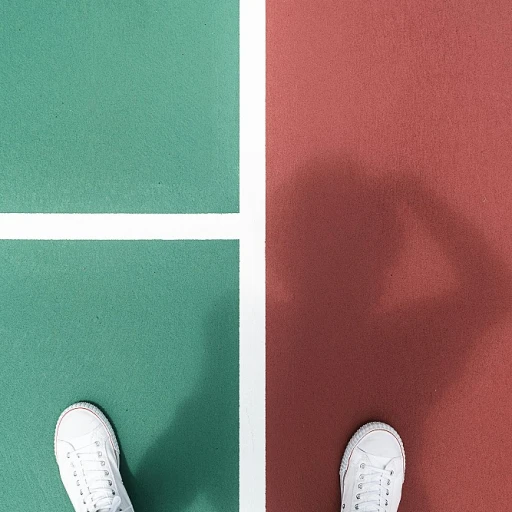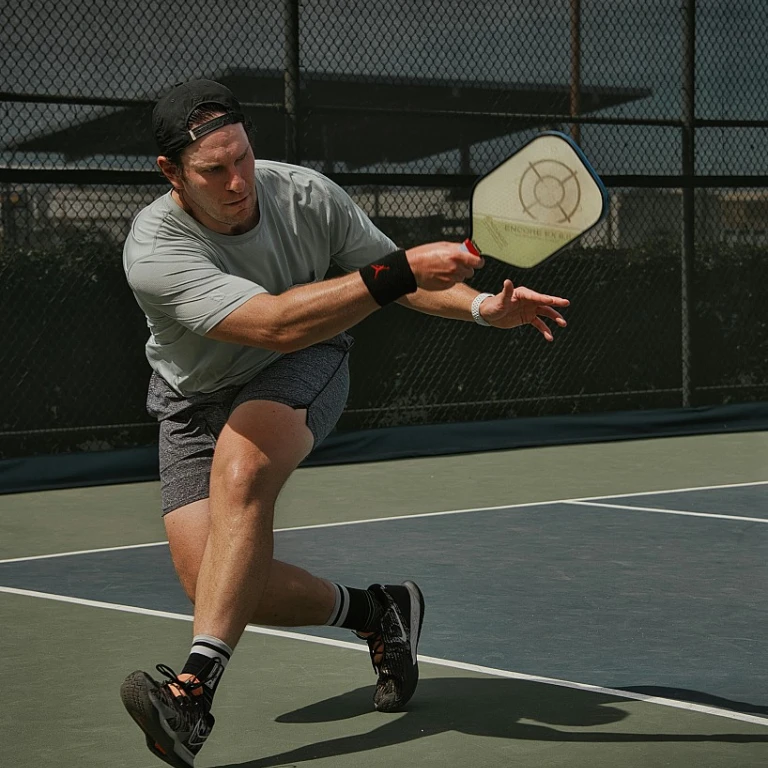Factors Influencing the Cost of a Pickleball Court
Key Elements Affecting the Price of a Pickleball Court
When delving into the financial aspect of building pickleball courts, understanding the factors that sway the final price is crucial. The costs hinge on several determinants that vary according to choices made during planning and execution.
- Size and Location: The size of your intended playing area, commonly around 20 feet by 44 feet, directly impacts the overall cost. Location also plays a role, with indoor pickleball facilities generally costing more due to the additional construction requirements.
- Surface Material: The choice of surface, like asphalt or concrete, is significant. Different materials will impact the expense and the durability of the court. Concrete courts might have a higher upfront cost but offer longevity, reducing long-term maintenance expenses.
- Site Preparation: Before any construction begins, site preparation is essential. This involves leveling the area, ensuring proper drainage, and creating a suitable base for the playing surface. Costs can vary depending on the existing conditions at the site.
- Construction Complexity: Opting for features associated with tennis courts or intricate indoor constructions can inflate costs due to the sophisticated engineering and extra materials involved.
Taking these elements into account is essential to making informed decisions about your project. For further insight into specialized
court construction, refer to this
expert guide.
Material Choices and Their Impact on Budget
Material Selection and Its Financial Implications
When embarking on the journey to build pickleball courts, one of the primary decisions impacting the total cost involves the choice of materials. The materials selected not only define the pickleball court surface but also significantly influence the budget.
- Concrete vs. Asphalt Concrete: Concrete is a popular choice for builders due to its durability and minimal maintenance costs. It provides a robust playing surface that can last for many years. In comparison, asphalt concrete might be more budget-friendly initially, but it requires additional maintenance, which can add to the overall court cost over time. The choice between these options often depends on initial cost considerations and long-term maintenance budgets.
- Indoor vs. Outdoor: Another aspect to consider is whether the pickleball facility will be indoor or outdoor. Indoor pickleball courts typically require additional construction expenditure, such as roofing and climate control systems, which could escalate the overall costs. However, indoor facilities protect the playing area and extend their usage throughout the year.
- Playing Surface Materials: The choice of surface materials also plays a crucial role. Court surfaces should ensure optimal grip and bounce, which brings into play material choices such as cushioned acrylic or specialized synthetic options. While these might increase upfront expenses, they can enhance the playing experience and potentially reduce recurring maintenance costs.
As the financial implications of these selections become evident, understanding them in conjunction with
the essentials of building a pickleball court can offer clarity in planning your project effectively.
Labor and Construction Expenses
Evaluating Labor and Construction Expenses
Understanding the labor and construction expenses is crucial when building a pickleball court, as these costs can significantly affect your overall budget. The main factors often include site preparation, material transportation, and installation labor, which can vary based on location, skill level of the workers, and size of the facility.
- Site Preparation: Before construction can begin, it's essential that the site is properly leveled and graded. This involves clearing vegetation, removing debris, and possibly even excavation, should the terrain demand it. It's worth noting that site preparation will cost more on uneven or difficult terrains compared to flat surfaces.
- Material Transportation: The cost associated with transporting materials like concrete, asphalt, and netting to the construction site can vary significantly, depending on proximity to suppliers and ease of access. Closer locations naturally incur lower transportation costs.
- Installation Labor: The complexity of the court design and the quality of the playing surface will require skilled labor, which can elevate costs. Whether opting for an indoor pickleball court or an outdoor one using asphalt or concrete surfaces, proper installation is key to ensuring long-term durability.
In conclusion, expenses for labor and construction can differ based on multiple variables. Careful consideration and planning in these areas will help keep your court construction on budget. For more insights into exploring labor costs associated with building pickleball courts, check out this
detailed guide.
Additional Features and Their Costs
Enhancing Your Pickleball Court with Additional Features
When building a pickleball court, the allure of adding extra features can significantly impact the total cost. While a basic court costs a substantial amount due to factors such as materials and construction expenses, additional features can elevate the playing experience but require careful financial consideration.
To enhance your court, it's essential to first think about what potential extras might budgetary allow. Here are a few options to consider:
- Lighting Systems: Installing lights for playing in the evening allows the court to be used for extended hours. However, the cost of purchasing and installing lighting systems can add up quickly, especially for outdoor courts.
- Fencing and Enclosures: These features help keep the balls within the playing area and provide privacy and security. The type of materials chosen for fencing, whether chain-link or more decorative options, will influence the court cost.
- Seating and Shade Structures: Comfortable seating areas and shade structures can enhance the facility's appeal for spectators. Keep in mind that these additions will increase the cost of building.
- Advanced Court Surface Coatings: Some prefer a specialized surface coating for better traction and performance, especially for indoor pickleball courts. This choice entails additional expenses beyond standard asphalt or concrete.
Investing in these features promises a better playing experience, but always balance allure with practicality and cost efficiency. For more detailed insights on the factors influencing your overall pickleball court budget, consider the foundational aspects of site preparation and construction expenses.
Maintenance Costs and Long-Term Considerations
Regular Maintenance and Future Considerations
Building a pickleball court represents a significant investment; hence, it's important to plan for maintenance and long-term care to protect this investment. Proper upkeep ensures the court remains a safe and enjoyable playing area for many years.
- Surface Care: Whether you choose asphalt or concrete, the playing surface will occasionally need cleaning and resurfacing to maintain its quality and safety. Resurfacing typically occurs every 4-8 years, depending on usage and environmental conditions.
- Net and Fencing: Keeping the net tensioned and examining it regularly for wear and tear, as well as maintaining any fencing, prevents costly replacements. Simple repairs and routine checks can prolong the lifespan of these essential match components.
- Painting Lines: Repainting the court lines should be part of the maintenance cycle. Worn or faded lines can affect gameplay and may need refreshing after resurfacing or as needed over time.
- Weather Protection: For outdoor courts, consider the impact of weather elements. Shade structures or wind barriers might be required to extend playing conditions and protect the court from sun and wind damage.
- Indoor Facility Needs: If the court is indoor, HVAC systems should be maintained for player comfort, which can become an unforeseen expense in a climate-controlled environment.
By factoring in these ongoing costs during the initial planning stages, you can mitigate unexpected expenses as your pickleball court becomes a cornerstone of your community's sporting facilities.
Budgeting Tips for Building a Pickleball Court
Strategic Planning for Your Pickleball Court Budget
Building a pickleball court can be a rewarding investment, but it's essential to approach the project with a clear budget in mind. Here are some practical tips to help you manage the costs effectively:
- Assess Your Needs: Determine whether you need an indoor or outdoor court. Indoor pickleball courts generally have higher construction costs due to additional materials and facility requirements.
- Choose the Right Materials: The choice of surface materials, such as asphalt or concrete, significantly impacts the total cost. Consider long-term maintenance when selecting materials, as some options may require more upkeep.
- Plan for Site Preparation: Proper site preparation is crucial for a durable playing surface. This includes leveling the ground and ensuring adequate drainage, which can add to the court construction costs.
- Factor in Labor Costs: Skilled labor is essential for quality construction. Obtain multiple quotes from contractors to ensure competitive pricing.
- Consider Additional Features: Adding features like lighting, fencing, or seating can enhance the playing experience but will increase the overall cost. Prioritize based on your budget.
- Account for Maintenance: Regular maintenance is necessary to keep your court in top condition. Budget for ongoing costs such as surface cleaning and repairs.
- Set a Realistic Budget: Be realistic about how much you can afford to spend. It's better to build a quality court within your means than to overspend and compromise on essential features.
By carefully considering these factors, you can create a pickleball court that meets your needs without exceeding your budget. Remember, the goal is to build a court that provides a great playing experience while being financially sustainable in the long run.

